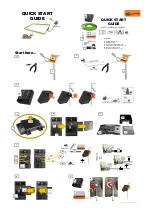
The barometric bypass damper is for systems 5 tons or under. It utilizes
a weighted damper blade to maintain constant duct pressure. This allows
for easy installation without the need for electrical power or wiring. The
round barometric damper can be installed in any position. It is an effi-
cient solution for small system fan capacity control.
SIZING:
When only the smallest zone is
calling, the maximum amount of excess
supply air will flow through the bypass
damper. To determine the proper size bypass
damper to use, do the following steps:
Step 1: Calculate bypass air volume as follows.
A) Calculate total air volume at 400 CFM
per ton.
B) Calculate air volume of smallest zone in
CFM.
C) Calculate bypass air volume by subtracting the smallest zone air
volume from the total.
(A - B = C)
Step 2: Select damper from sizing table.
Once you have calculated the bypass air volume from Step 1, use the
BAROMETRIC BYPASS SELECTION TABLE. From the table, select the
bypass damper with the CFM rating equal to or greater than the value cal-
culated in Step 1. For rectangular barometric dampers, use a duc-
tulator to convert from round to rectangular.
If bypassing more than 1600 CFM, use electronic bypass damper.
Example:
You have a 4 ton system. Your smallest zone will use 500
CFM. The total CFM is 1600 CFM (400 * 4). Your bypass CFM is 1100
(1600 - 500). From the table, you determine that a 12" bypass damper
is needed.
Do not use the barometric bypass in any system over 5 tons.
For systems over 5 tons, or to bypass more than 1600 CFM, use the
electronic bypass.
Bypass dampers are used to provide constant air delivery through the air
handling unit. This is done by bypassing excess air from the supply duct
back to the return duct. As a zone is satisfied, its zone damper closes.
When this happens, the bypass damper opens just enough to bypass the
excess air. This will control static pressure and noise at the diffusers.
Zonex Systems offers two types of bypass dampers, Barometric and Elec-
tronic. Each is available in round or rectangular configuration. Baro-
metric bypass dampers are limited to systems of 5 tons. Electronic
dampers can be used on any size system. For systems 5 tons or smaller,
the barometric bypass can be used. For systems over 5 tons, we recom-
mend the electronic bypass.
RECTANGULAR & ROUND
BAROMETRIC BYPASS
TO THERMOSTAT
*
No connection
(- - - -) For power open/closed damper applications only.
FIVE WIRE LINK
TO
SYSTEM
CONTROLLER
DAMPER #2
RELAY BOARD
Y
R
C
W
Y
R
C
RO
MC
RC
W
R
d
B
WY
G
TB1
TB2
W2
W2
DAMPER #1
RELAY BOARD
Y
R
C
RO
MC
RC
W
R
d
B
W
YG
TB1
TB2
W2
W2
*
*
*
*
*
*
*
*
*
*
*
Y
R
C
RO
MC
RC
W
R
d
B
W
Y
G
TB1
TB2
W2
W2
*
*
*
*
*
*
*
*
*
*
*
DAMPER #3
RELAY BOARD
Each zone thermostat can control more than one zone damper.
Use the following diagram if the thermostat will control no more than
three dampers and the maximum number of zone dampers is not exceed-
ed (ten dampers for System 1000, twenty dampers for System 2000).
If a thermostat needs to control more than three dampers and/or the
maximum number of zone dampers is exceeded, use the wiring diagram
shown on page 44)
ZONE DAMPERS
BYPASS DAMPERS
BYPASS DAMPERS – BAROMETRIC
AIRFLOW
1
2
4
3
1. Damper Shaft
2. Lock Nut
3. Lever Arm
4. Counter Weight
BAROMETRIC BYPASS
DAMPER
PARALLELING ZONE DAMPERS
Diameter
CFM
9”
650
10”
800
12”
1200
14”
1600
16”
2000
BAROMETRIC BYPASS
SELECTION TABLE
23
















































